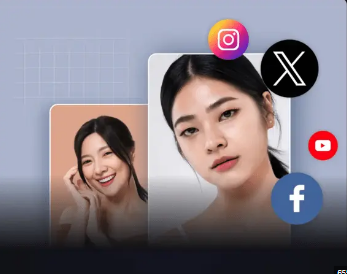The Benefits of Face Swap Technology for Video Content

In recent years, face swap technology has evolved significantly, revolutionizing the way we create and engage with video content. By utilizing advanced artificial intelligence (AI) and deep learning algorithms, face swapping allows users to seamlessly replace one person’s face with another’s in video footage. While initially popularized for entertainment purposes, face swap technology has a broad range of applications that can significantly enhance the production and consumption of video content. This article explores the benefits of face swap technology and its impact on the digital media landscape.
1. Enhancing Creative Expression
face swap vid technology opens up new possibilities for creative expression in video content. Content creators can experiment with different personas, create unique visuals, and produce more engaging stories. Whether it’s for creating humorous skits, dramatic reenactments, or educational material, face swap technology enables creators to use their imagination without being restricted by the physical presence of the individuals involved. For instance, a director can cast characters from different parts of the world or time periods and seamlessly integrate them into a single scene, adding layers of creativity to the production.
2. Cost-Effective Production
Traditional video production can be a costly endeavor, especially when it requires multiple actors, special effects, or travel to different locations. With face swap technology, producers can save money on hiring actors and filming in various settings. Instead of having to coordinate with numerous individuals or shoot complex scenes, creators can digitally alter faces to create the illusion of different people interacting in various environments. This reduces the overall production budget while still maintaining high-quality content.
3. Personalized Marketing and Advertising
Businesses are increasingly turning to video content for their marketing efforts. Face swap technology can be a game changer in creating personalized advertising experiences. By allowing brands to adapt their content to specific demographics, face swap technology makes it possible to showcase how products or services might look or feel in different cultural or personal contexts. For example, brands could modify advertisements by swapping faces to reflect the audience’s preferences, making the message more relatable and increasing consumer engagement. This customization can lead to higher conversion rates and improve the effectiveness of marketing campaigns.
4. Improving Accessibility and Inclusivity
Face swap technology also plays an important role in enhancing accessibility and inclusivity in video content. It can be used to create representations of people with different ethnic backgrounds, genders, and physical abilities, ensuring that diverse audiences see themselves reflected in media. This helps to break down barriers and make content more universally appealing. Additionally, face swapping technology can be used to dub foreign-language films or videos by replacing the faces of characters to match the language, making it easier for viewers to connect with international content.
5. Revolutionizing Virtual Meetings and Education
In the business and education sectors, face swap technology is offering innovative ways to engage participants. Virtual meetings and online learning platforms can benefit from the integration of this technology by allowing instructors and presenters to use avatars or alternate identities, enhancing the experience. By swapping faces in real-time, speakers can better interact with their audience, making the interaction more dynamic and memorable. In online education, teachers can present lessons with different avatars, creating an immersive experience for students.
Conclusion
Face swap technology has far-reaching implications for the video content industry. From creative freedom and cost savings to personalized marketing and enhanced inclusivity, its advantages are evident across various sectors. As this technology continues to evolve, its potential to transform how we produce, consume, and interact with video content will undoubtedly continue to grow, shaping the future of digital media.
